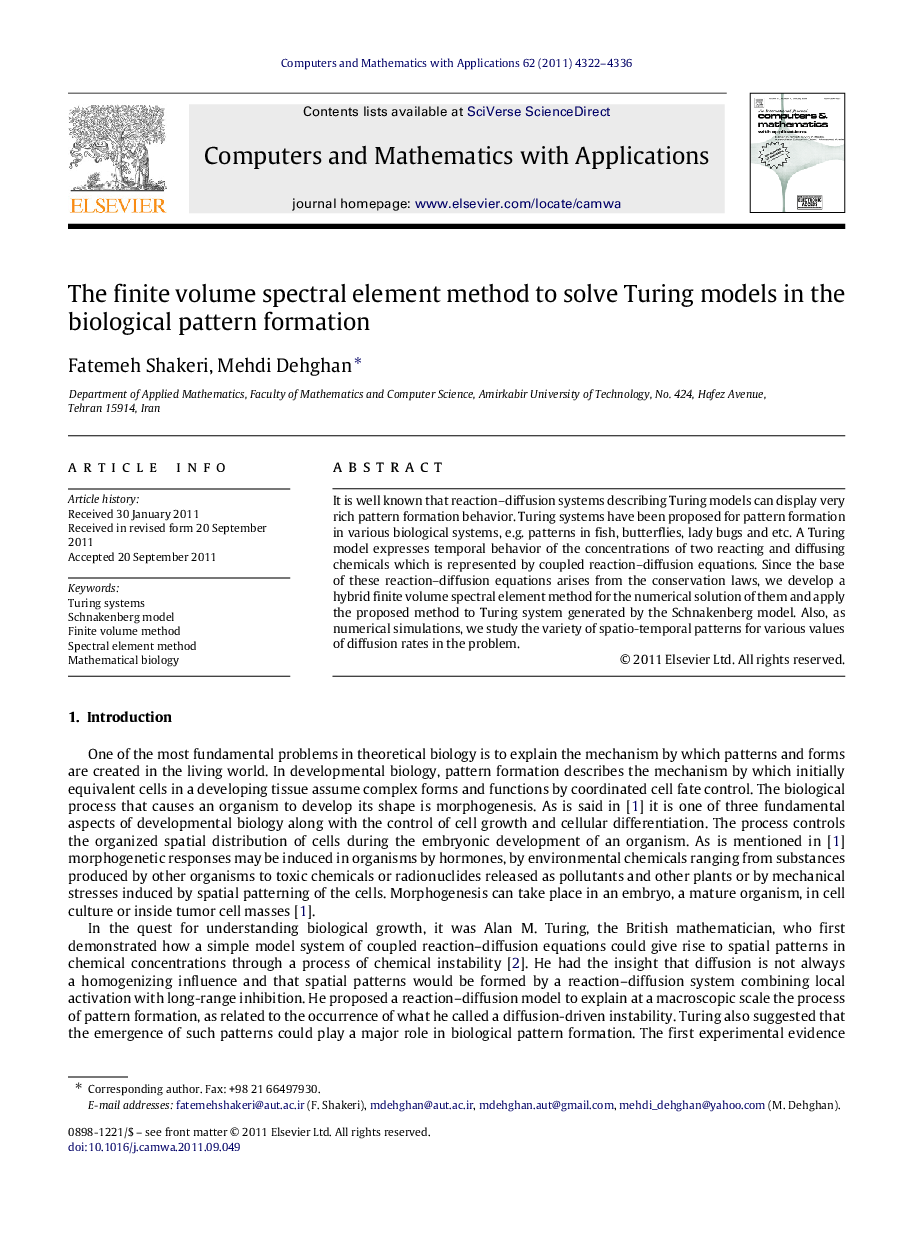| Article ID | Journal | Published Year | Pages | File Type |
|---|---|---|---|---|
| 470580 | Computers & Mathematics with Applications | 2011 | 15 Pages |
It is well known that reaction–diffusion systems describing Turing models can display very rich pattern formation behavior. Turing systems have been proposed for pattern formation in various biological systems, e.g. patterns in fish, butterflies, lady bugs and etc. A Turing model expresses temporal behavior of the concentrations of two reacting and diffusing chemicals which is represented by coupled reaction–diffusion equations. Since the base of these reaction–diffusion equations arises from the conservation laws, we develop a hybrid finite volume spectral element method for the numerical solution of them and apply the proposed method to Turing system generated by the Schnakenberg model. Also, as numerical simulations, we study the variety of spatio-temporal patterns for various values of diffusion rates in the problem.
